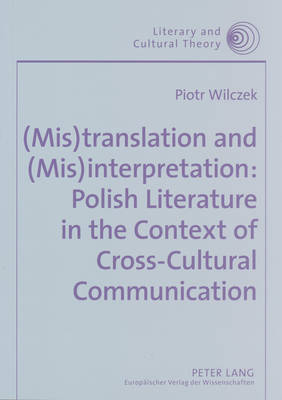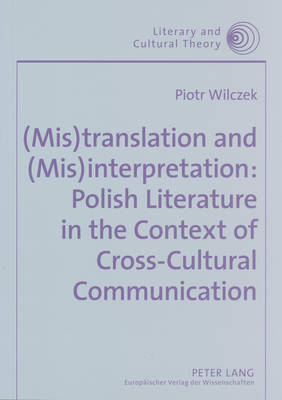
- Afhalen na 1 uur in een winkel met voorraad
- Gratis thuislevering in België vanaf € 30
- Ruim aanbod met 7 miljoen producten
- Afhalen na 1 uur in een winkel met voorraad
- Gratis thuislevering in België vanaf € 30
- Ruim aanbod met 7 miljoen producten
Zoeken
(Mis)Translation and (Mis)Interpretation: Polish Literature in the Context of Cross-Cultural Communication
Piotr Wilczek
€ 68,45
+ 136 punten
Omschrijving
The book (Mis)translation and (Mis)interpretation: Polish Literature in the Context of Cross-Cultural Communication is devoted to various aspects of the presence of Polish literature and culture in cross-cultural and international contexts. The chapters discuss the problems of the translation (and mistranslation), as well as the interpretation (and misinterpretation) of literary texts, cultural facts and even social interactions. Even though no specific literary or cultural theory is explicitly discussed in the book, each of the central issues raised in particular chapters implicitly refers to a significant theoretical problem. The first section of the book is devoted to five examples of English translations of Polish poetry and Polish translations of English poetry. The second section of the book is titled Polish Culture in European and American Contexts. The first three chapters discuss the issue of «hate speech» and cultural misunderstandings in the context of Reformation polemics, and the problem of pattern poetry. The next five chapters deal with various issues of cross-cultural communication between Poland and America. All case studies discussed in the book exemplify one general problem: how to communicate effectively despite linguistic, cultural and religious differences and how to understand and translate the cultural heritage of the past to contemporary readers.
Specificaties
Betrokkenen
- Auteur(s):
- Uitgeverij:
Inhoud
- Aantal bladzijden:
- 164
- Taal:
- Engels
- Reeks:
- Reeksnummer:
- nr. 22
Eigenschappen
- Productcode (EAN):
- 9783631546284
- Verschijningsdatum:
- 6/12/2005
- Uitvoering:
- Paperback
- Formaat:
- Trade paperback (VS)
- Afmetingen:
- 148 mm x 210 mm
- Gewicht:
- 239 g

Alleen bij Standaard Boekhandel
+ 136 punten op je klantenkaart van Standaard Boekhandel
Beoordelingen
We publiceren alleen reviews die voldoen aan de voorwaarden voor reviews. Bekijk onze voorwaarden voor reviews.











